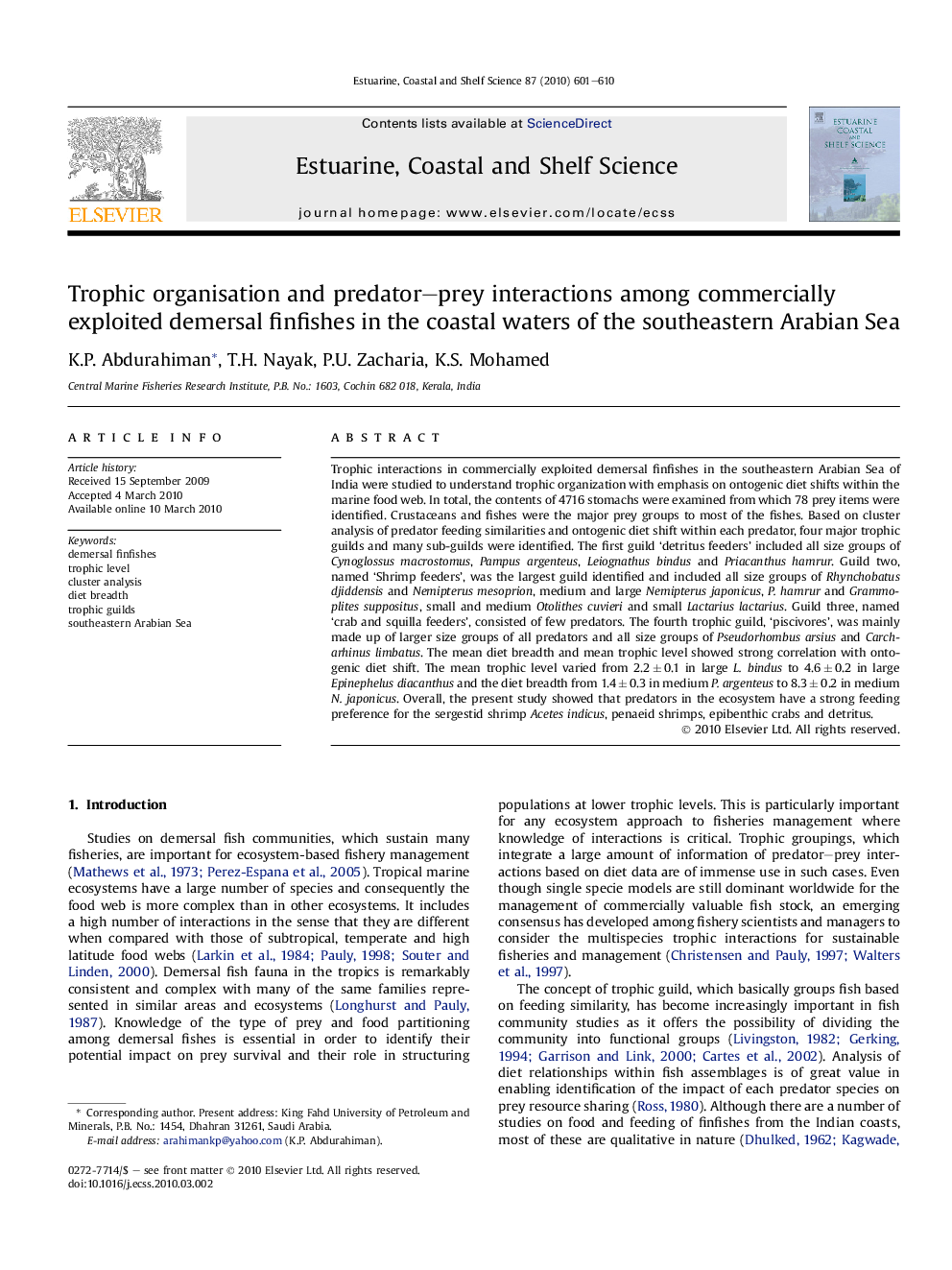| Article ID | Journal | Published Year | Pages | File Type |
|---|---|---|---|---|
| 4541075 | Estuarine, Coastal and Shelf Science | 2010 | 10 Pages |
Trophic interactions in commercially exploited demersal finfishes in the southeastern Arabian Sea of India were studied to understand trophic organization with emphasis on ontogenic diet shifts within the marine food web. In total, the contents of 4716 stomachs were examined from which 78 prey items were identified. Crustaceans and fishes were the major prey groups to most of the fishes. Based on cluster analysis of predator feeding similarities and ontogenic diet shift within each predator, four major trophic guilds and many sub-guilds were identified. The first guild ‘detritus feeders’ included all size groups of Cynoglossus macrostomus, Pampus argenteus, Leiognathus bindus and Priacanthus hamrur. Guild two, named ‘Shrimp feeders’, was the largest guild identified and included all size groups of Rhynchobatus djiddensis and Nemipterus mesoprion, medium and large Nemipterus japonicus, P. hamrur and Grammoplites suppositus, small and medium Otolithes cuvieri and small Lactarius lactarius. Guild three, named ‘crab and squilla feeders’, consisted of few predators. The fourth trophic guild, ‘piscivores’, was mainly made up of larger size groups of all predators and all size groups of Pseudorhombus arsius and Carcharhinus limbatus. The mean diet breadth and mean trophic level showed strong correlation with ontogenic diet shift. The mean trophic level varied from 2.2 ± 0.1 in large L. bindus to 4.6 ± 0.2 in large Epinephelus diacanthus and the diet breadth from 1.4 ± 0.3 in medium P. argenteus to 8.3 ± 0.2 in medium N. japonicus. Overall, the present study showed that predators in the ecosystem have a strong feeding preference for the sergestid shrimp Acetes indicus, penaeid shrimps, epibenthic crabs and detritus.
